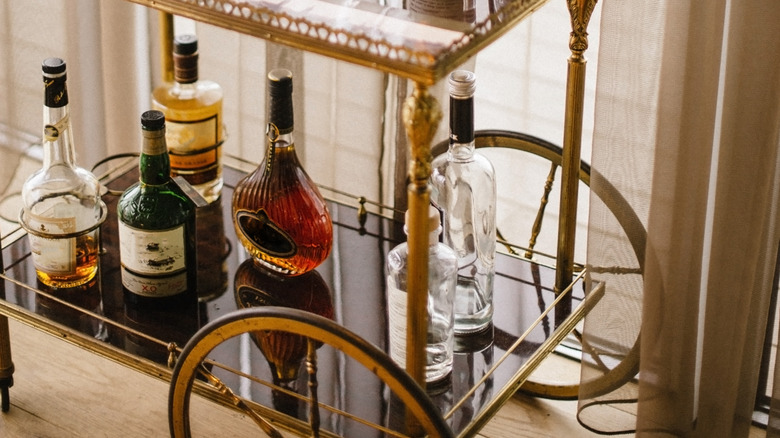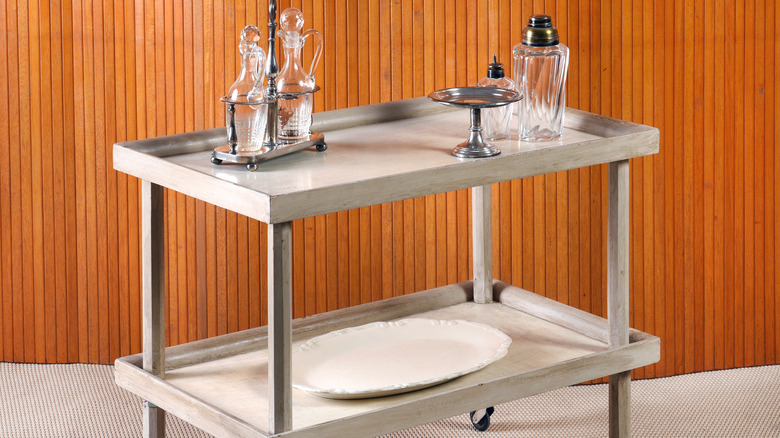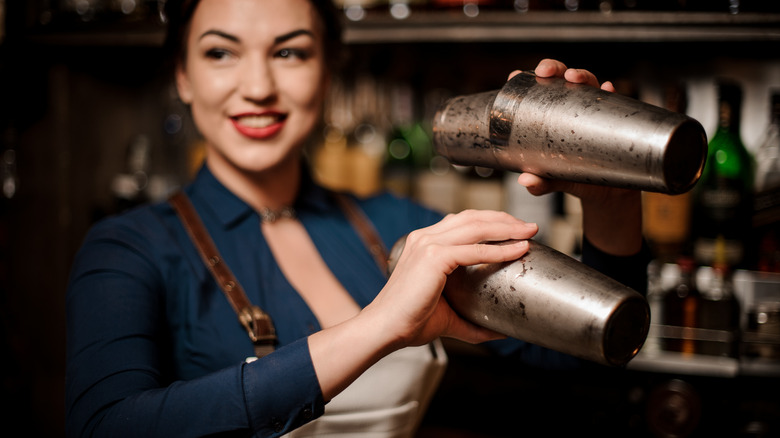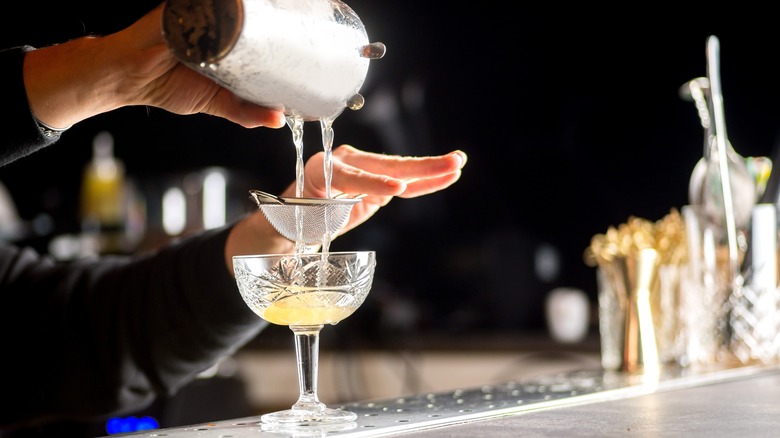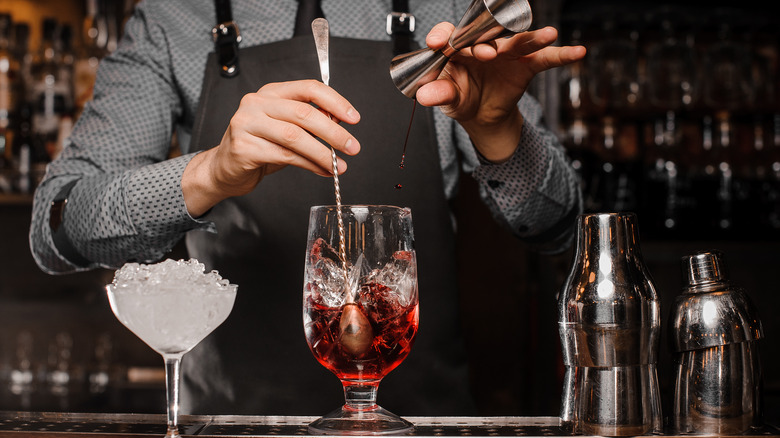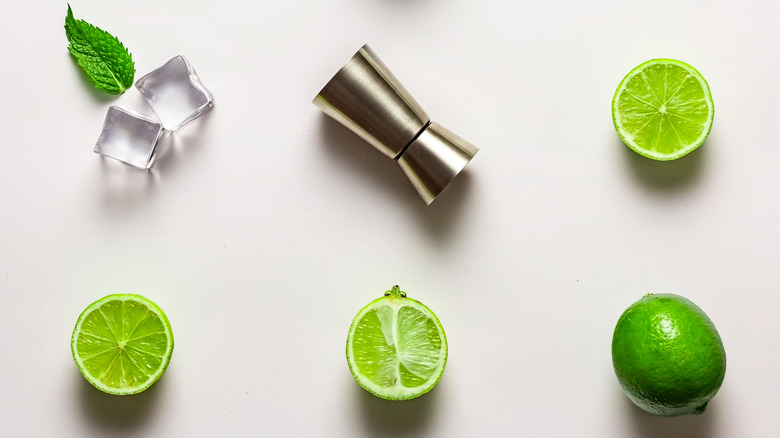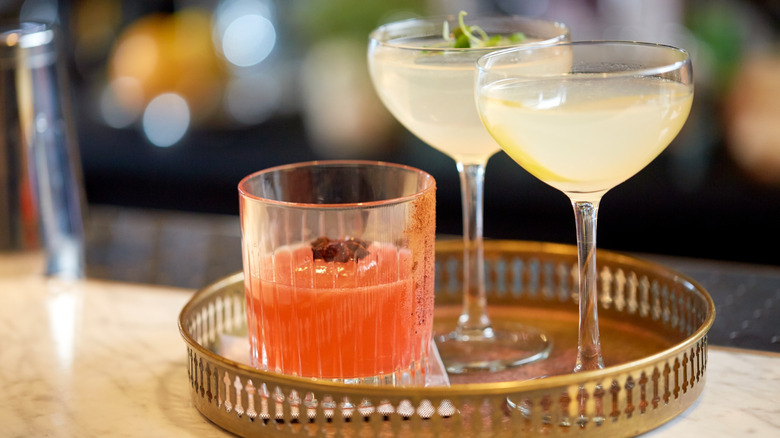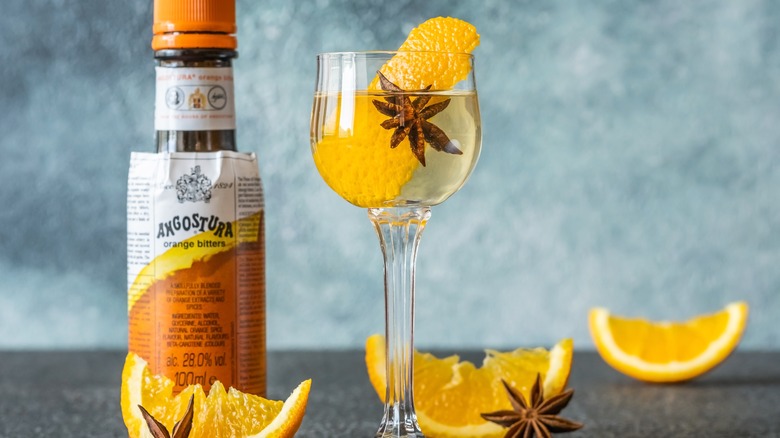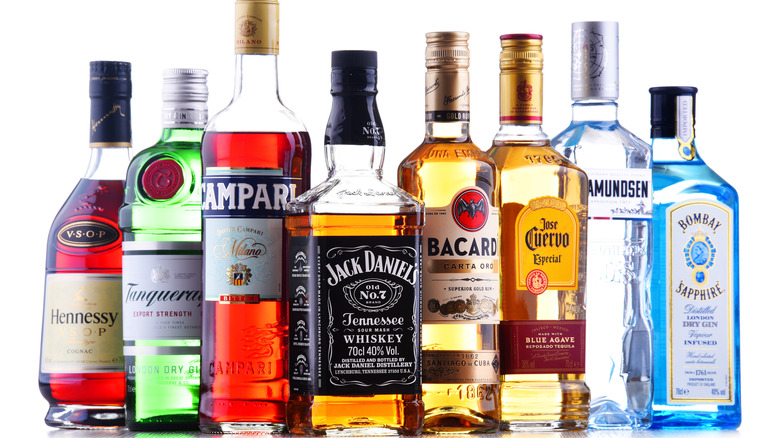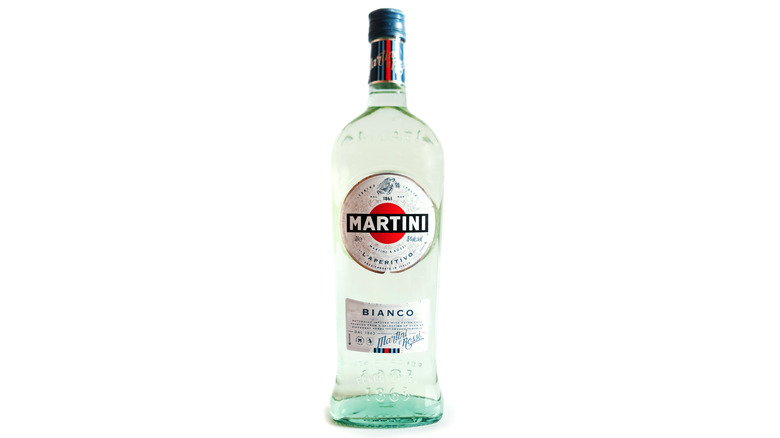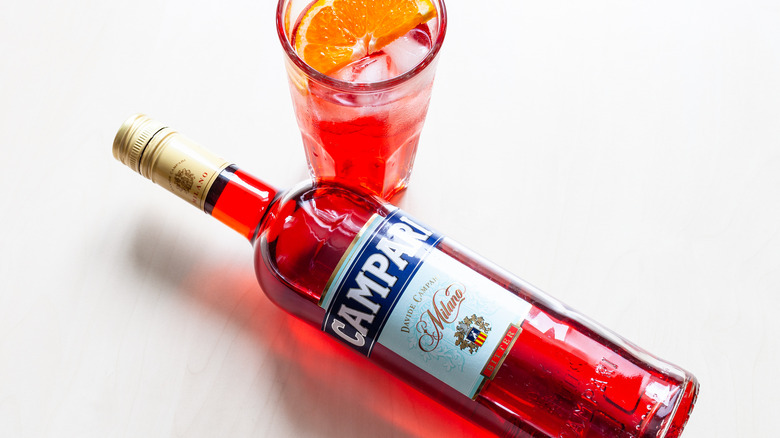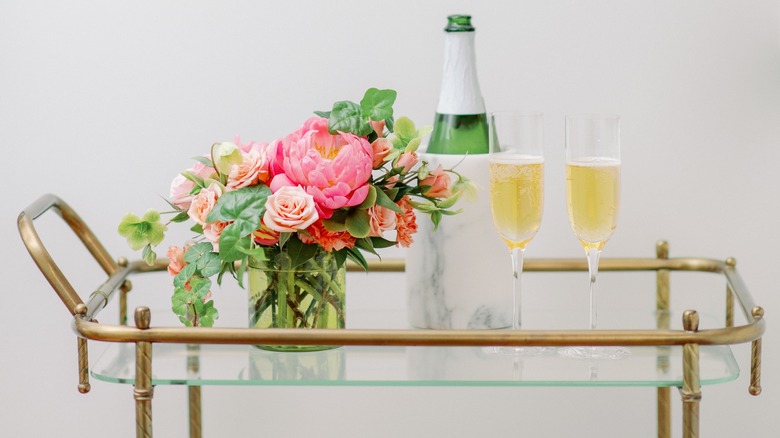How To Create The Ultimate At-Home Bar Cart
Maybe you've finally nailed that cocktail, or perhaps you've been binge-watching "Mad Men" again. Or, in a case that might relate to many of us, you bought a few bottles (or more than a few) that deserve a place of honor. At any rate, you're contemplating a bar cart, and this is your sign to take the plunge. (Do you really need a sign, though?)
Regardless of your personal style or existing décor, a bar cart brings a certain je ne sais quoi to a space. And although decorating with alcohol can easily veer into college dorm room territory, a bar cart brings a level of sophistication that beer cans and handles of vodka simply can't compete with. (Sorry, current dorm-room dwellers!)
If you enjoy hosting, mixing up drinks for guests, and feeling just a tad smug about your glorious home décor, the bar cart is definitely for you. Welcome to the fun side of adulting. (Turns out it's not all just laundry, parking tickets, and paying bills.)
Which bar cart is right for me?
There is a bevy of options when it comes to bar carts. Mid-century modern (obviously), minimalist, maximalist, vintage, rattan, industrial — the list goes on. And if you're in the mood for a project and want to save your pennies, plenty of thrift store furniture (we're looking at you, funky vintage cabinet) can be repurposed into a unique option. In short, the sky's the limit.
The first step is to figure out what you need (you have how much liquor?) and balance that with the space you have. A generous room can accommodate a larger cart. But if a tight corner is all you have to spare, choose something with a smaller footprint. If this is the case, don't despair. The number of tiers, known to most of us as shelves, can help maximize vertical space.
This is where it gets fun — and personal. But before letting your inner designer take over, there are a few things to consider. If you dislike clutter or have an especially large collection of bottles, consider a bar cart with hidden storage. And materials matter: transparent glass or plastic are excellent options for small rooms since they take up less visual space. Plus, those more durable options have the added benefit of being easy to clean and stain-proof. (Wood carts can be lovely to look at, but drips and spills will definitely leave a mark. Trays and bar mats can come in handy here.)
Shaker
If you're going to shake cocktails for friends, you're going to need a good shaker. You can essentially break down shakers into three basic styles:
The Boston shaker: If you're bringing your A-game, it's the Boston shaker all the way. Because it's fast and easy to clean, it's almost exclusively what professional bartenders use. Essentially, it's two cups that fit snugly together, with no strainer, so it's a tad trickier to get the hang of. (Of course, you can and should buy a strainer separately. See below.) Closing it tightly so it doesn't spill while you shake, and popping it open using the heel of your hand are acquired skills. But once you get it, it's a cinch. Spending a little extra on a shaker that works well is a worthy investment.
The cobbler shaker: This is the home-bartender shaker of choice. It has three parts: a metal cup, strainer, and cap. The built-in strainer makes this one a breeze to use — just shake, remove the cap, and pour. Unfortunately, this one can also be hard to open, and since there are so many moving parts, there is a greater chance of spills while you're shaking. And like most two-in-ones, the strainers in cobbler-style shakers aren't the best. The holes are larger, so they can let ice and ingredients through.
The French shaker: This stylish shaker is a bit of both — the shape of a cobbler but with no built-in strainer like the Boston. These are probably the best-looking of the three (perfect for displaying) but are less popular, so, therefore, harder to find. However, if this style has stolen your heart, a bit of sleuthing should turn up an option or two, allowing you to build the cart of your dreams.
Strainer
Once you've decided on a shaker, a strainer is next on the list. If you went for the Boston shaker (admit it: you're basically Tom Cruise in "Cocktail," aren't you?), the Hawthorne strainer is your go-to. The Hawthorne strainer is designed to fit in the mouth of a shaker tin or mixing glass, and the metal coil ensures a snug fit. It's designed with tabs or "ears," which ensure that it will fit a variety of glass sizes.
The julep strainer is a more elegant option, and not strictly necessary if you're already investing in a Hawthorne Strainer. It's a tad trickier to use but is a chic display piece. Basically, it's choosing style over substance, which we're not necessarily against.
If you really want to get technical with your cocktails, a fine-mesh strainer is a good addition. This small conical strainer is designed to catch those itty-bitty ice chips or teeny bits of muddled herb. It should be used in conjunction with another strainer, otherwise known as "double straining." It's an extra step, but it makes for a silky, smooth cocktail (and no mint in your teeth).
Mixing glass and spoon
Place the mixing glass under "nice to have, but not necessary." Although, to be fair, isn't that the very essence of a bar cart? Keeping that in mind, a mixing glass is a sleek, sophisticated addition to your bartending accouterment, used when you're making drinks that are stirred rather than shaken. Of course, this can be done in your shaker, regardless of which style you choose — also a good option if you're short on space. But if you have the room, it's a chic way to up the bar-cart ante.
On the other hand, the bar spoon is non-negotiable. The long handle makes them perfect for stirred drinks, and for fishing garnishes out of their respective jars. Now that you're all into cocktails, make friends with spirit-forward stirred versions, like Manhattans, negronis, and martinis (yes, James Bond's "shaken, not stirred" was pure nonsense). A good bar spoon with a grippy handle will get you there. And if you're feeling extra fancy, it's an essential tool for making layered drinks, like the New York sour with its eye-catching red-wine float.
Jigger
Professional bartenders might make free-pouring look easy, but for any kind of cocktail-crafting consistency, some kind of measuring tool is essential. After all, once you nail that cocktail, you're going to want to make it again and again as perfectly as you did the first time.
Shot glasses are fine for pouring ounces, but if you really want to up your game, only a jigger will do. Usually in the shape of an hourglass, this measuring tool is normally two cups attached at their bases. Each cup measures out a different volume — for instance, 1 and 2 ounces — although the volume differs depending on the jigger you choose. Many have different units of measurement on their sides, which is a great option for the home bartender.
Most come in stainless steel, but plastic options (don't knock it, the measurements are very easy to read) and other finishes are available, too. Choose wisely since you'll be using it often.
Glassware
Once you have the tools required to make a great drink, you need a great glass to serve it in. Glassware is also a great opportunity to showcase your personal style. Plus, you went to all that trouble to make a delicious drink; it would be a shame to serve it in a humdrum glass. Here are a few styles to stock:
Rocks: These lowball glasses are a classic for serving booze-forward cocktails over ice, like an old-fashioned or margarita. They're sturdy and short, so, in other words, there's no room for fizzy mixers. They also work if you like sipping spirits as-is, like bourbon or scotch. The double-rock glass is larger, so it's a little more versatile.
Collins: These highball glasses are your best bet if you like a drink with a mixer, like a gin and tonic, mojito, or bloody mary. They're taller and roomier than rocks glasses. If you're stocking your bar from scratch, feel free to choose between rocks or Collins glasses and just buy one (for now).
Coupe: Every bartender needs at least one fancy glass, and we humbly suggest that this be it. A coupe can do double-duty as a Champagne glass, but holds its own with a drink served "up" (that is, shaken over ice and strained). Classic cocktails like daiquiris, martinis, and sidecars are perfectly suited for this sleek shape.
If those options whet your appetite for fun glassware, consider adding champagne flutes, shot glasses, and tiki glasses to your bar. The only rule of glassware is that you should enjoy drinking out of them whether they're high-end or mismatched from a thrift store.
Bitters
We are currently living in the Golden Age of cocktail bitters. Until recently, there wasn't much out there beyond Angostura and Peychaud's — essential components in old-fashioneds and sazeracs, respectively. (Fun fact: a sazerac isn't really a sazerac if it doesn't include Peychaud's.) If you only stock one or two, make it those old standbys, as there's a reason you see them nearly everywhere drinks are served.
So, what exactly are bitters? They are a concentrated tincture of aromatics in an alcohol base (via Liquor.com). Traditionally, the aromatics were more herbal, but these days options abound — and we're so glad they do.
The home bartender can experiment simply by adding a dash of these versatile aromatics to their tipples. There are classic flavors like orange, citrus, and ginger, but wilder flavors like chocolate, rhubarb, and celery are hard to resist. Some are barrel-aged, while others add a spicy kick. We recommend a variety pack that includes several flavors so that you can experiment to your heart's content. Many varieties can even be used to kick your favorite dishes up a notch. However, whether you add it to food or drink, keep in mind that a small dash will do since these teeny bottles pack a punch, flavor-wise.
Main spirits
Finally! The fun stuff. Once you've stocked your bar with all the tools required to craft a great cocktail, all that's missing is the liquor. If you're stocking your bar from scratch, there are a few main spirits you'll need to get started.
Vodka may be a fly-under-the-radar spirit, but no bar is complete without a bottle. It's an essential building block in cocktails like the cosmopolitan, Moscow mule, and bloody mary. Gin is another stand-by, although the infused botanicals make for a real spectrum of flavors. For cocktail crafting, choose a gin with a more mellow flavor profile. A zippier gin is great for gin and tonics.
Next up: rum. If you're only buying one rum, make it white rum. It's a little more versatile than its cousins, dark rum and navy rum (which is a potent blend of aged rums). Tropical drinks are often spiked with white rum, as are old standbys like the mojito. If you're ready to level up, take the plunge into dark rum. It's a key ingredient in many fun-to-make drinks, like mai-tais. And then there's whiskey. There are so many to choose from, and depending on how you like to imbibe, scotch or bourbon may need to make the cut, too. However, make sure you have one good quality whiskey that's appropriate for mixing, not just sipping.
Finally, be sure to stock a solid tequila. If you've only had this spirit with a lime wedge and a lick of salt, prepare to be surprised. There are excellent tequila options out there at reasonable price points. And really, will your bar cart ever be complete if you can't shake up a good Margarita? For bonus points, add smoky, tequila-adjacent mezcal to the mix.
Vermouth
Now that your bar is stocked with the essentials, it's time to add a little craft to your cocktail via vermouth. So, what is vermouth anyways? It's an "aromatized, fortified wine" that includes wormwood as a bittering agent (via Saveur). As Saveur reports, it can be enjoyed on its own but more often is an important cocktail component.
Vermouth comes in many varieties, but there are three main ones: sweet (red), dry, and white (bianco). Sweet vermouth is the most common and shows up in cocktails like the Manhattan and negroni. Dry vermouth is best known as an ingredient in martinis, although it shows up in a few other mixed drinks, too. Bianco, or white vermouth, falls somewhere in the middle of the sweet-dry vermouth spectrum.
If you have some space to spare, consider adding Lillet. This French aperitif isn't technically a vermouth since it uses quinine as a bittering agent instead of wormwood. But it fits the bill and is essential in sippers like the vesper martini and corpse reviver #2.
Liqueurs
Don't leave the liquor store just yet! If you really want to get your cocktail on, invest in a few liqueurs. At the very least, every home bartender needs an orange-flavored liqueur. It's an essential component in many drink recipes, including sours, sidecars, and margaritas. There are three different varieties: triple sec, Curaçao, and brandy-based varieties (via Liquor.com). Some are nice for sipping, like Grand Marnier, but for cocktail crafting, don't be afraid to choose a wallet-friendly workhorse.
A bottle of brandy will round out your collection nicely. It can be sipped straight as a digestif, or used as a base in a plethora of cocktails. The sidecar, Vieux Carré (a classic out of New Orleans), and between the sheets all lean on this smooth spirit. Plus, mulled wine and sangria just wouldn't be the same without it.
Finally, add a bottle of Campari. This bright red, bitter aperitif is necessary in Negronis and Americanos, and even makes an appearance in the Tiki-tinged Jungle Bird. Those three will get a home bar started, but consider adding a fruity option like Maraschino, a nutty pick such as Amaretto or Frangelico, and something herbal like Chartreuse or St. Germain (elderflower).
Style it!
Let's not forget: a bar cart is a stylish piece of furniture. And depending on how you approach it, it can be the centerpiece of a room. So, now that it's stocked, ready for service, and settled in its place of honor, make sure it looks the part, too.
One surefire way to add a touch of class is to decant any mixes, like soda or juice, into display-worthy vessels. Garnishes like olives, cut fruit, and cherries will also look best in uniform containers. And, of course, once you're done bar service for the day, just pop them back in the fridge. Although space might be a premium, a few personal touches can really help make it your own. A vase with a few flowers is always a welcome touch, but we're partial to a plant that does double-duty, like hardy mint (for juleps, mojitos, and more) or herbaceous basil. Pop it in an attractive pot, and enjoy the fragrance while you're mixing.
If you have a tad more real estate, add cocktail recipe books, candles, and any fancy bottles of wine or scotch you might have, you know... just lying around. And voila! You are ready to entertain friends, family, parties, and more, and you can turn your home into a hub for the holidays, birthdays, or any special occasion. Or, if you're like us, it will be a hub for everyday downtime. We'll drink to that.
